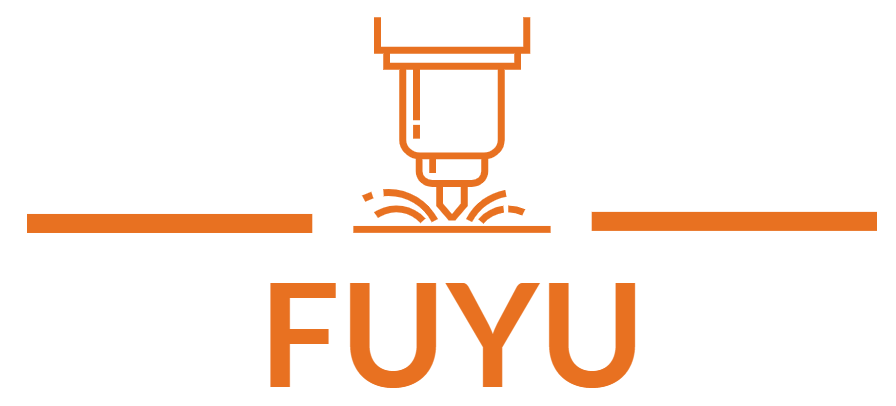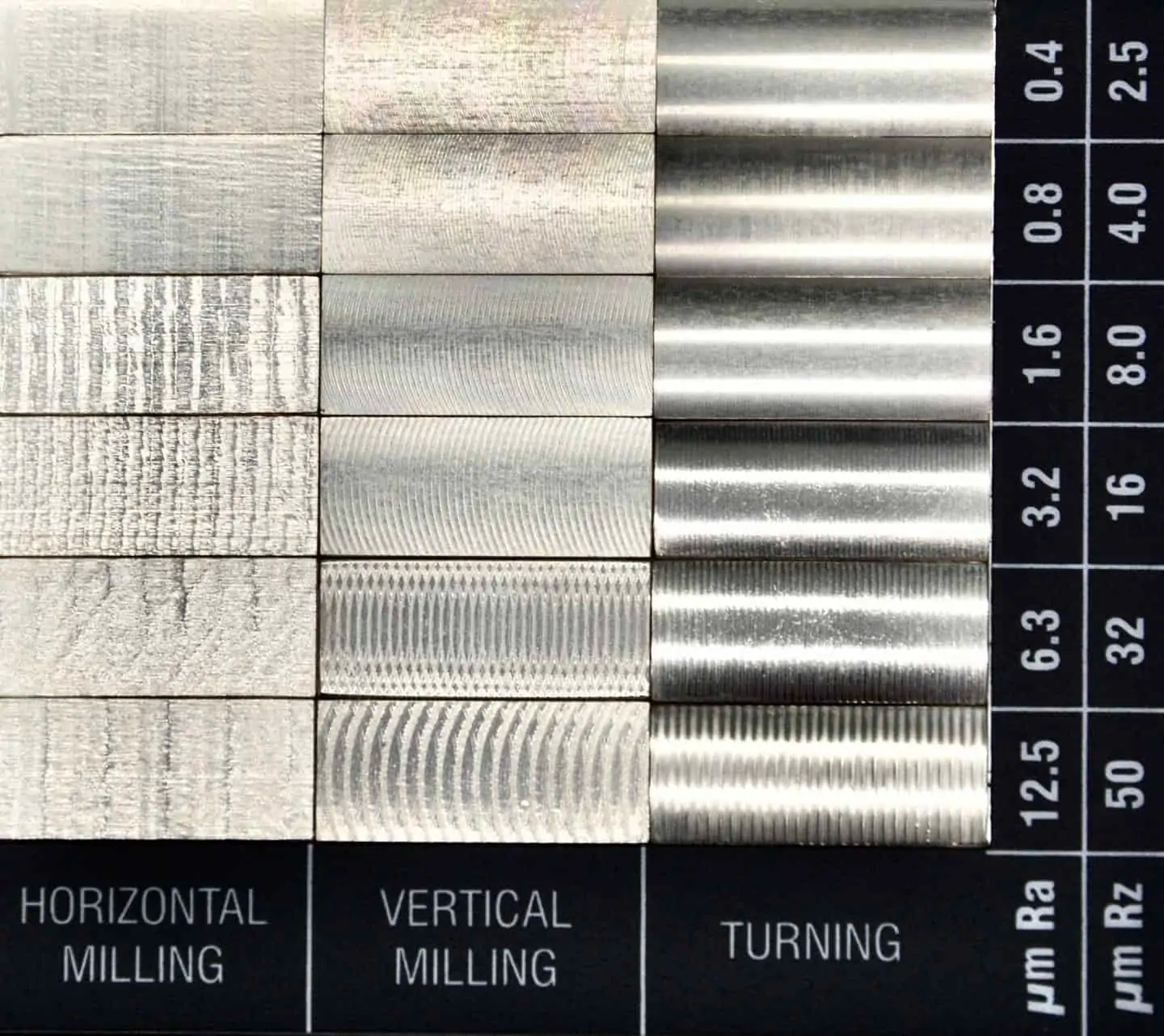Choose the Best Finish for Your CNC Machined Part
What’s Surface Roughness for CNC Machining?
Surface roughness plays a pivotal role in shaping both the functionality and aesthetics of a product. It exerts influence over various aspects, such as the overall appearance, wear resistance, corrosion resistance, and friction characteristics. Therefore, attaining the appropriate surface roughness is paramount in the CNC machining process.
The conventional approach to assess surface roughness involves calculating the average deviation of the surface from its ideal shape. Specialized instruments like surface roughness testers and profilometers are commonly employed for this measurement. Typically, the results are expressed as a length measurement in micrometers (μm) or as the roughness average (Ra).
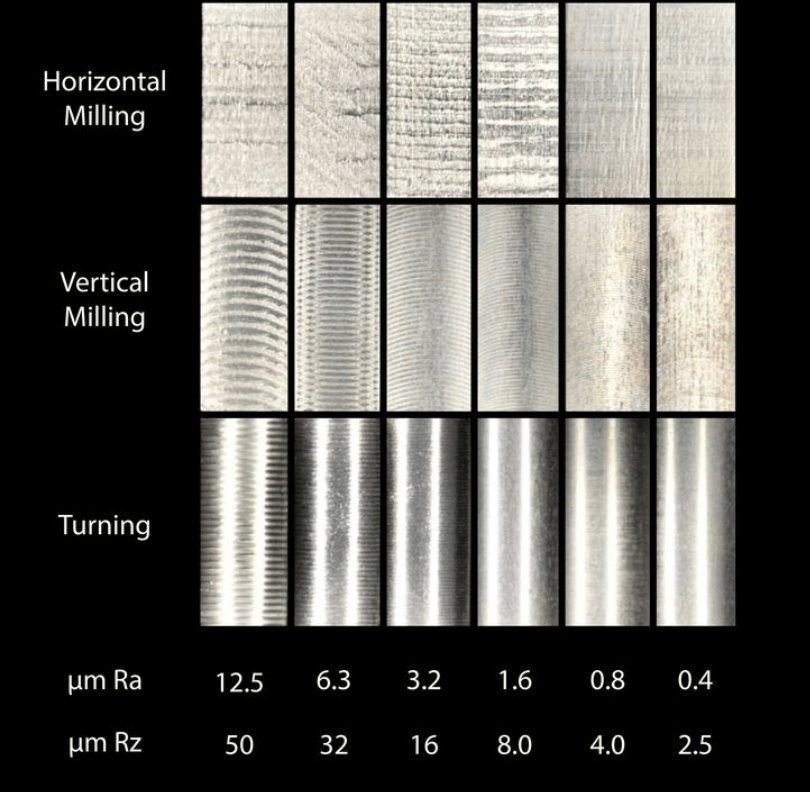
Achieving the desired surface roughness in CNC machining involves considering various factors, including material properties, machining techniques, cutting parameters (such as cutting speed, feed rate, and depth of cut), and tool selection. By adjusting these elements, machinists can customize the surface roughness to meet the specific requirements of the item or product being manufactured.
In essence, the symbol Ra, representing surface roughness in CNC machining, delineates the microscopic changes and texture of the machined surface. This factor significantly influences both the functionality and appearance of the final product. Through the careful manipulation of cutting parameters, tool selection, and machining processes, machinists strive to achieve the desired surface roughness.
As Machined Finish
As-machined finishing is one of the available surface finishing options, denoting the surface finish that requires no additional processes after dismounting from the machine. The primary characteristics of the as-machined surface texture include visible tool marks and a rough texture resulting from the subtractive nature of CNC machining. Surface roughness (Ra), representing the average deviation of the machined profile from the ideal surface, is the key factor determining finishing quality.
Generally, specific Ra values are employed by the industry to establish surface finish requirements and assess the quality of machined finishes. While these values may vary based on the application, they typically fall within a defined range. It’s essential to recognize that Ra is not the sole factor in evaluating machined finish quality; considerations like surface integrity, waviness, and flatness also play a role in the overall assessment. The industry relies on the following Ra values:
3.2 μm Ra
This represents the standard machined finish, characterized by its notably smooth surface suitable for the majority of consumer parts. However, it does leave visible cut marks. Unless otherwise specified, the standard surface roughness is 3.2 μm Ra. For parts experiencing loads, vibrations, and stress, it is recommended to maintain a maximum surface roughness of 3.2 μm Ra.
This finishing option with the shortest turnaround time. Parts have visible tool marks and potentially sharp edges and burrs, which can be removed upon request.
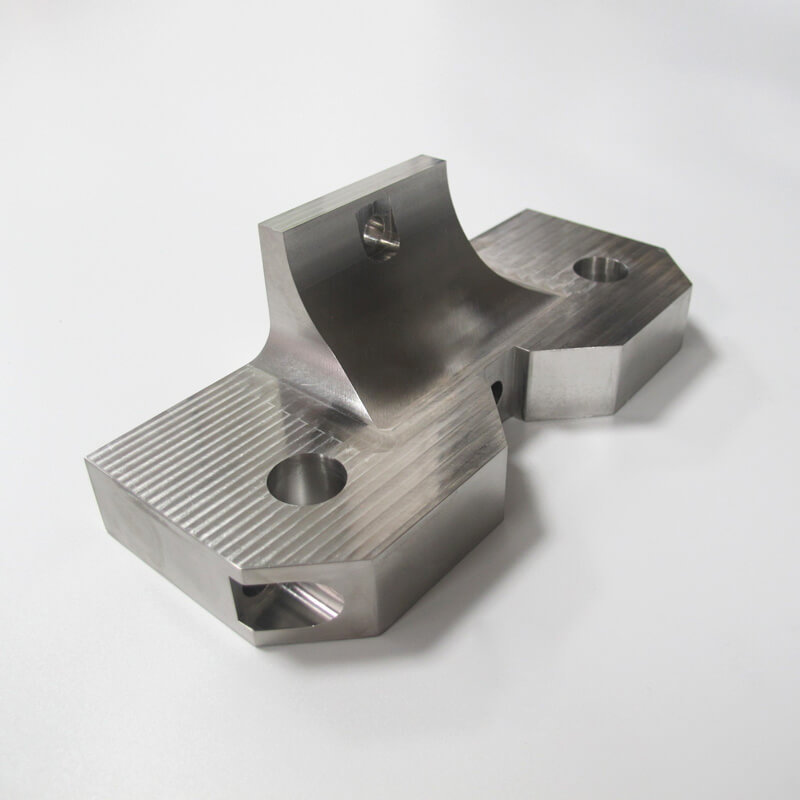
1.6μm Ra
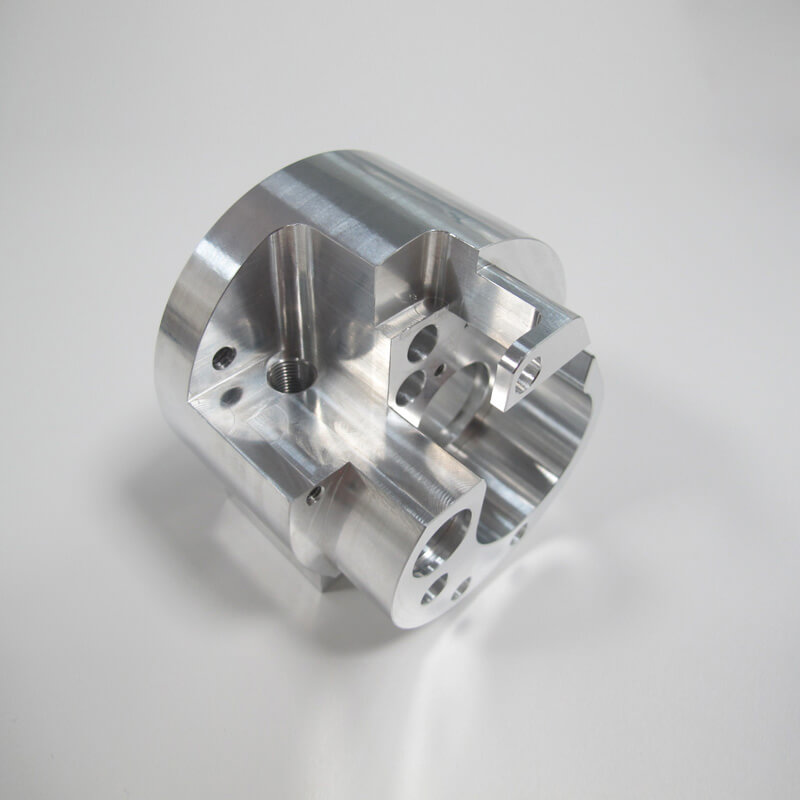
CNC machining generally results in subtle cut marks. This Ra value is ideal for precise fits and stressed components, well-suited for slowly moving surfaces with mild loads. It is not recommended for use on parts subject to rapid spinning or vibration. Machinists achieve this surface roughness under controlled conditions, employing high speeds, fine feeds, and light cuts. It is similar to a ‘As machined’ finish, but with less visible machine marks. Parts are machined at a lower feed rate, with no hand polishing.
Cost: This selection raises the manufacturing cost by approximately 2.5% for standard aluminum alloys (e.g., 3.1645). The surcharge may be higher for intricate or complex parts.
0.8μm Ra
Because of its premium quality and stringent control standards, producing this surface finish incurs high costs. It is most beneficial for components exposed to concentrated stress, offering optimal performance. Additionally, it is well-suited for bearings in scenarios involving intermittent motion and light loads.
Cost: This choice results in a manufacturing price increase of approximately 5% for standard aluminum alloys (e.g., 3.1645). The surcharge may be higher for complex parts.
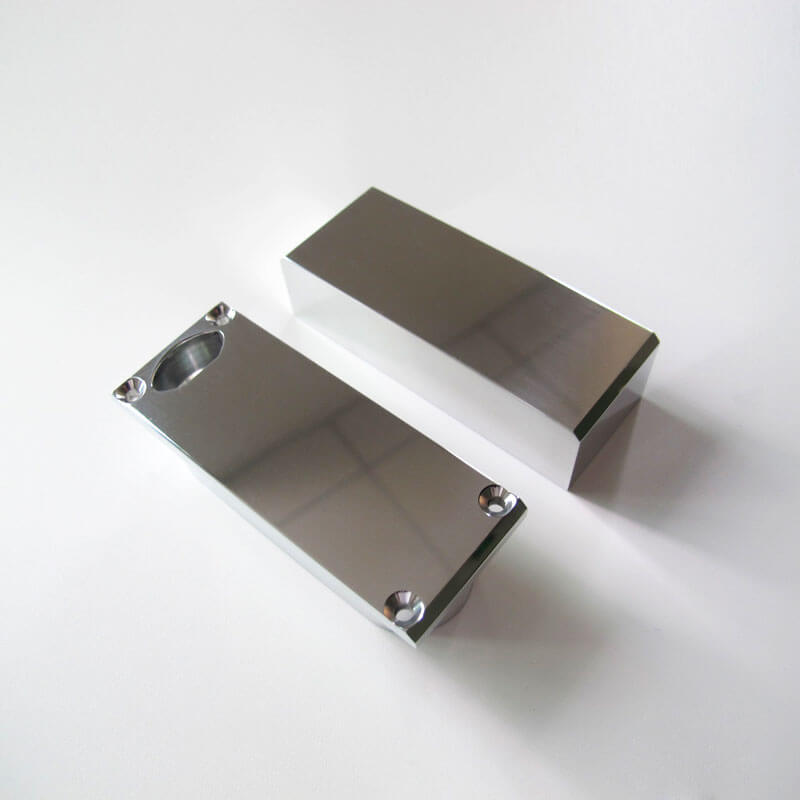
0.4μm Ra
This represents the finest and top-tier level of surface roughness. It excels in areas experiencing significant strain or stress. Components like fast-rotating bearings and shafts benefit from this surface finish. It is advisable to opt for this surface finish only when smoothness is paramount, considering it demands meticulous efforts to achieve.
Cost: Opting for this alternative raises the manufacturing price by approximately 11-15% for standard aluminum alloys (e.g., 3.1645). The surcharge may be higher for intricate or complex parts.
Common Types of CNC Machining Surface Finishes
Several surface finishing options are available for CNC machining, and these finishes significantly contribute to defining the ultimate look of a machined part. Smooth, brushed, matte, and textured surface finishes represent some of the well-known types. Each type possesses unique characteristics. Consequently, the ideal finish is determined by the specific requirements or specifications of the product. Presented below is a metal surface finish chart detailing various finishing options for parts along with their descriptions:
| Surface Finish Options | Description (Applicable materials and benefits) |
|---|---|
| Anodizing | Anodizing is a commonly employed surface treatment for aluminum, creating an oxide layer on the metal’s surface. This oxide layer enhances the durability and corrosion resistance of CNC machined parts. Moreover, anodizing enhances the material’s visual appeal and provides options for coloring. |
| Powder Coating | Powder coating is a dry finishing method where fine powder is electrostatically applied to the surface of parts. Subsequently, curing takes place to ensure a permanent treatment. This technique provides a durable and superior finish, exhibiting remarkable resistance to impact, solvents, and UV radiation. Powder coating can be applied to various materials, including metals, polymers, and wood. |
| Polishing | Polishing is a process aimed at attaining a smooth and glossy finish. Utilizing abrasives such as buffing wheels or polishing chemicals, it enhances the reflectivity and aesthetic appeal of materials like metal, imparting a mirror-like finish. |
| Painting | Paint serves as a surface treatment suitable for various materials, providing both visual appeal and corrosion protection. With a range of color options, painting is ideal for metals, polymers, wood, and other materials. |
| Black Oxide Coating | Black oxide coating is a commonly employed surface finish for steel and iron. It results in a wear-resistant finish, providing a dark and visually appealing surface. The lubricity and durability of the treated surface can be enhanced through black oxide coating. |
| Electroplating | The electroplating process involves depositing a layer of metal onto a substrate. Utilizing this finish provides enhanced corrosion resistance, improves appearance, and adds a protective layer against wear. |
| Passivation | Passivation is a common procedure applied to stainless steel to boost its corrosion resistance by eliminating iron impurities and forming a protective oxide coating. This enhances the resilience and performance of stainless steel, especially in challenging conditions. |
| Bead Blasting | Bead blasting employs high pressure to propel small beads onto a surface, creating a textured and uniformly rough machined surface finish. This treatment aids in surface cleaning, eliminates burrs, and prepares the surface for subsequent finishing processes. |
| Brushing | Brushing is a technique that employs abrasive pads or brushes to impart a finish to the surface of a material. Ideal for enhancing the visual appeal of metal surfaces, this finish, especially effective on stainless steel, creates a distinctive linear or circular pattern on the surface. |
| Alodine Coating | Commonly utilized on metals like aluminum, alodine coating—also known as chromate conversion coating—is prevalent. It serves effectively as a primer for paint or powder coatings and imparts a corrosion-resistant finish. This process creates a thin protective layer that enhances the bond with subsequent coatings. |
At Fuyu manufacturing, we have the manufacturing capabilities necessary to produce your CNC machined parts with any of these roughness values. Simply upload your model to our instant quote contact form, select the desired surface roughness and receive a quote within hours.
FAQs – Surface Roughness for CNC Machining
Q1: What factors should be considered when choosing a finish for CNC machined parts?
A1: Key factors to consider include the material of the part, the desired appearance, the environment it will be used in, functional requirements like corrosion resistance or hardness, and cost implications.
Q2: What are the different types of finishes available for CNC machined parts?
A2: Common types of finishes include anodizing, powder coating, plating, polishing, painting, and bead blasting. Each finish offers different benefits and is suited to specific applications.
Q3: How does anodizing improve the properties of CNC machined parts?
A3: Anodizing enhances the corrosion resistance, wear resistance, and hardness of aluminum parts. It also allows for the addition of various colors for aesthetic purposes.
Q4: Why is surface finish important for CNC machined parts?
A4: Surface finish is crucial because it affects the part’s appearance, durability, and performance. A suitable finish can improve resistance to wear and corrosion, enhance cleaning and maintenance, and meet specific functional requirements.
Q5: Can a custom finish be applied to CNC machined parts?
A5: Yes, custom finishes can be applied to meet specific requirements or to align with brand aesthetics. This might involve custom colors, textures, or special protective coatings.
Q6: What are the cost implications of different CNC machined part finishes?
A6: Costs vary depending on the type of finish, the complexity of the application process, and the size of the part. Some finishes like painting or polishing might be less expensive, while others like anodizing or plating can be more costly but offer greater durability and protection.
You Are Interested In:
